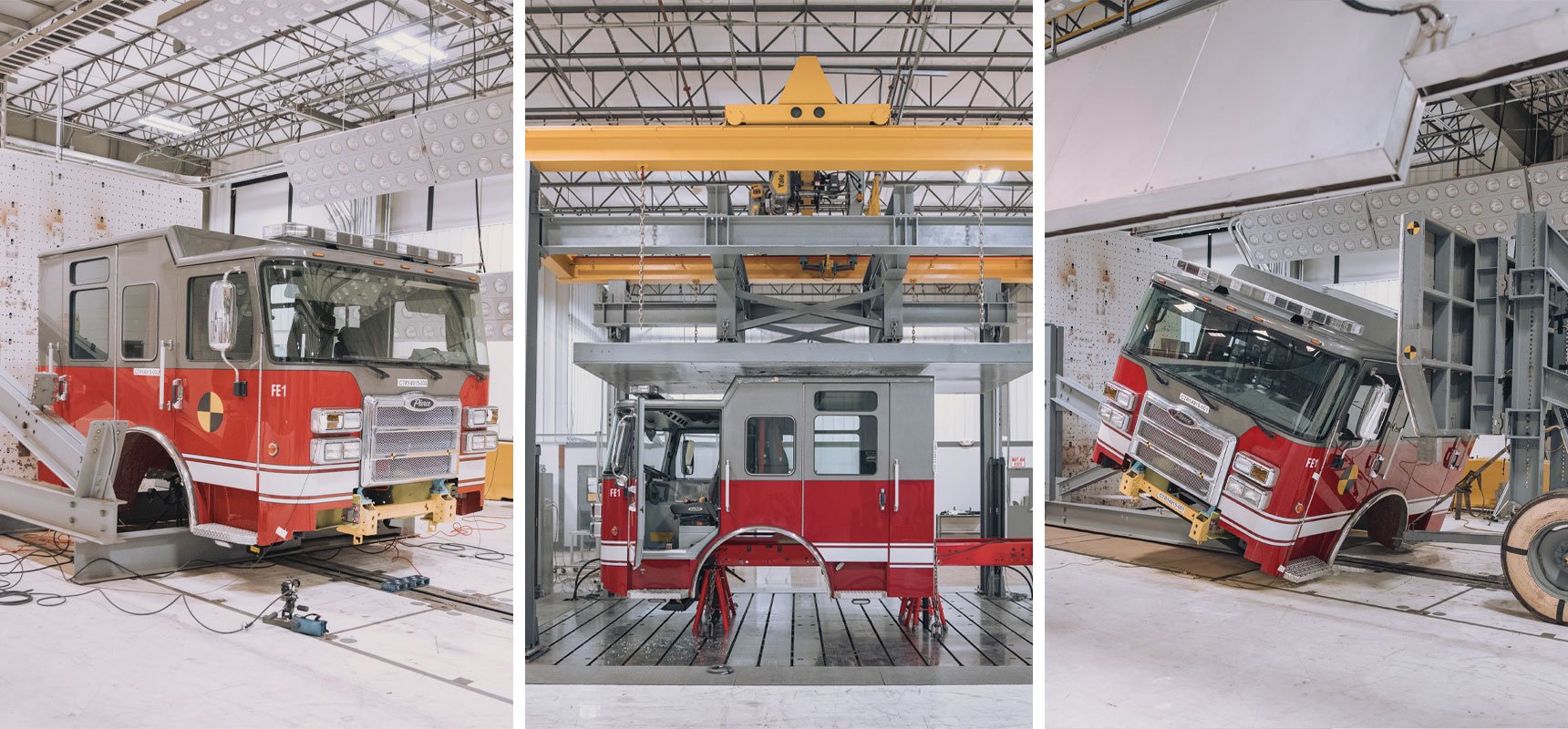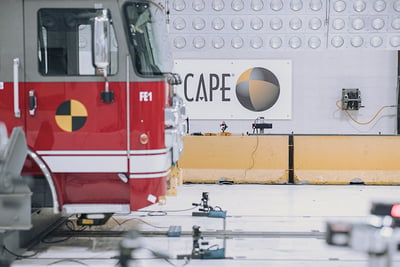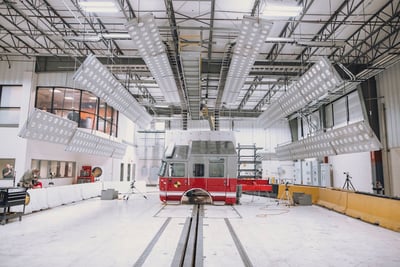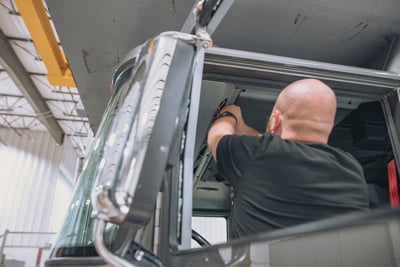
When a fire truck is involved in a collision, the safety of the occupants is the primary concern. The Society of Automotive Engineers (SAE) outlines very specific cab integrity evaluation and safety requirements intended to protect the occupants of the cab.
- The doors cannot open during the impact.
- The cab must maintain at least one attachment point to the chassis frame.
- The cab cannot crush in a way that intrudes into the survivable occupant space.
If a fire truck could pass all three test standards, a fire department should feel comfortable with the overall safety of the chassis—right? The answer is…it depends.
Most fire truck manufacturers rely on a cab lift cylinder—a component designed to lift the cab for service or maintenance—to maintain cab and chassis attachment and pass the test successfully.
How is this possible? Let’s explore the specification in more detail.
What Are Fire Truck Cab Integrity Requirements?
 Various regulatory agencies and standards are dedicated exclusively to fire trucks, including documented regulations focusing on cab safety and crash test ratings and requirements. The Society of Automotive Engineers has several standards focused on cab integrity and safety.
Various regulatory agencies and standards are dedicated exclusively to fire trucks, including documented regulations focusing on cab safety and crash test ratings and requirements. The Society of Automotive Engineers has several standards focused on cab integrity and safety.
The cab integrity requirements are in place to simulate an accident with a fire truck that results in a head-on collision or rollover event. There are three individual tests run to approximate the event.
- The first test simulates a frontal impact with an energy of 32,500 foot-pounds of energy. To put that in more relatable terms, that's equivalent to 14,000 pounds striking the cab at 11 miles per hour.
- The second test is an impact to the top corner of the cab with 13,000 foot-pounds of energy simulating the truck beginning to roll.
- The third load is the axle rating put on the roof of the cab, simulating the truck coming to rest upside down.
During all of these tests, the survivable space within the cab cannot be impinged upon. In the case of the frontal impact test, most manufacturers test to two times energy and certify their cabs to withstand 65,000 foot-pounds of energy while maintaining at least one cab mount attachment point to the frame. Successfully passing this two times energy test can be challenging and many fire truck manufacturers have relied on a cab lift cylinder to maintain the cab mount required to pass the test.
Does this technically pass the test? Absolutely. But is it the ideal way to approach cab safety for the brave men and women of the fire service?
How Pierce is Different: What Has Pierce Done to Meet What We Believe is the True Intention of the Specification
 The SAE specification requires the front impact energy to be imparted into the front of the cab, above the frame rail, with the intention of maintaining at least one cab attachment to the frame.
The SAE specification requires the front impact energy to be imparted into the front of the cab, above the frame rail, with the intention of maintaining at least one cab attachment to the frame.
This attachment is required so the frame and cab assembly stay together after an accident to prevent secondary impacts.
Pierce believes the true intention of the specification is to engineer a cab mount system that remains intact in a collision.
SAE does not specifically define what constitutes a connection point. So a cab lift cylinder can actually be used to meet the definition. And that's precisely what manufacturers have relied upon to meet the test criteria of two times energy. Until now…
Here’s the Pierce Manufacturing difference.
Pierce no longer wanted to rely on a cab lift cylinder to be the only remaining attachment point and challenged our engineering team to design a new cab mount system that could withstand a two times energy frontal impact while maintaining ALL cab mount attachment points. Our engineers met the challenge. All Pierce cabs can absorb the impact of two times energy without relying on cab lift cylinders. Our engineers have modified our mounts to absorb and transmit the load into the chassis frame.
All Pierce chassis not only meet the test requirement but surpass it by not breaking a single cab mount.
The new design methodology is compatible with all of our cabs and will be a standard feature on Pierce products with a standard delivery.
Why Does This Cab Safety Enhancement Matter?
 Firefighters and the communities they serve rely on safe and dependable fire trucks. That’s why Pierce Manufacturing is continually leading the industry with new advancements because cab safety is one of the true cases where more is better.
Firefighters and the communities they serve rely on safe and dependable fire trucks. That’s why Pierce Manufacturing is continually leading the industry with new advancements because cab safety is one of the true cases where more is better.
We encourage you to have a conversation on safety with your fire department.
If you have any questions about cab integrity, please reach out to your local Pierce dealer.